|
1. Passport and Visa
Visas:Visas are not required for clients coming from the following countries:
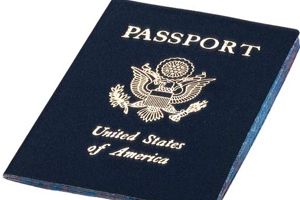 Norway,
Finland, Sweden, Denmark, Japan, Korea, Singapore, Thailand, Malaysia,
Laos, Philippines, Indonesia, Brunei… While the Vietnamese government is
considering the cancellation of visa requirements for other countries,
clients not included in the list above need to secure visas. They will
need to supply the following information: Norway,
Finland, Sweden, Denmark, Japan, Korea, Singapore, Thailand, Malaysia,
Laos, Philippines, Indonesia, Brunei… While the Vietnamese government is
considering the cancellation of visa requirements for other countries,
clients not included in the list above need to secure visas. They will
need to supply the following information:
Name in full (as it appears on passport)
Date of birth and nation of birth
Nationality and career
Passport number ( valid for six months after departure from Vietnam)
Date of entry and exit from Vietnam
There
are two ways to secure Vietnam visas: at the airport upon arrival
(landing visas) or at a Vietnamese overseas embassy. Both of these need
visa authorization / approval in advance. We can help with each. Just
contact us at the address below. The procedures are easy and quite quick
nowadays. We simply need three/four working days -- in some urgent
cases, one to two working days is sufficient -- to get the visa
approval. We can email or fax this document to you. With this copy you
can contact the Vietnam embassy to obtain your visa. Or you can bring
the copy on your flight to Vietnam and show it to the Immigration desk
at the airport to receive a visa upon arrival. You will pay for visa fee
($US 20 each). Our services of visa processing are free of charge
Vyta Tours
17A Tran Dinh Xu St., Dist.1, Saigon (Ho Chi Minh City) - Vietnam.
Tel: (848) 3837 7881 - 3837 7882 - 3837 8072 :: Fax: (848) 3836 8385
Email:
info@vytatours.comThis e-mail address is being protected from spambots. You need JavaScript enabled to view it
:: Website: http://www.vytatour.com/
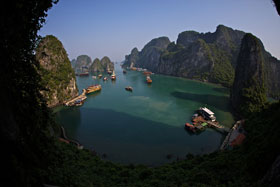 2.Customs and security 2.Customs and security
Custom
and security are getting easier and easier. All foreigners are warmly
welcomed in Vietnam. You can bring as much money as you like into
Vietnam, but cannot take out more than you brought in. We suggest you
declare your currency as well as any valuables such as jewelry and
electronic equipments. You need to take them out with you or imported
taxes could be applied. And like other countries, drugs and firearms are
strictly prohibited in Vietnam.
3. Weather and climate
With
a coastline that stretches more than 3,200 kilometers, Vietnam's
climate is varied even though it is generally considered a tropical
country.
The South:
Saigonand
its eastern provinces, as well as the Mekong delta, have two seasons,
the dry season and rainy season. The dry season is characterized with
clear skies and lots of sunshine. It runs from November through May.
Temperatures range between 18 and 30 degrees Celsius (64 to 86 degrees
Fahrenheit) from November through March. However, it sometimes warms up
to 34 degrees Celsius (93 degrees Fahrenheit) in June and July. The
rainy season begins in June and lasts through October. The rains during
this season have their own charm, raining hard for one to two hours in
late afternoon. The rains - and they are sometimes heavy - end quickly,
cooling off temperatures even as the sun once again begins to shine.
Flooding occasionally happens deep in the Mekong delta far from tourist
sites
The Center:
Phan
Rang through Nghe An: This section of Vietnam has three months of rain
yearly, in November, December and January. Temperatures range from 17 to
27 degrees Celsius (63 to 81 degrees Fahrenheit). The rains are often
light and misty. Drizzle is common in Hue. It's cool in February and
sometimes warms up to 35 degrees Celsius (95 degrees Fahrenheit) in June
and July. Aside from the rainy months, the climate in central Vietnam
is quite agreeable, especially in March, April, May, August, Sept and
October.
The North:
Thanh
Hoa through the rest of the north: Here there are four seasons: Summer,
Autumn, Winter and Spring. In the spring and in autumn, March through
May and August through October, the temperatures are cool and quite
comfortable. From November through February, it drizzles and gets
colder. However, "cold" in Vietnam has no comparison to other temperate
climate countries. In Vietnam, even in the coldest months temperatures
rarely fall below 10 degrees Celsius (50 degrees Fahrenheit). During the
hottest months temperatures can reach 36 degrees Celsius (97 degrees
Fahrenheit).
Note:Rain and cool weather are not major factors in
Vietnam. Consider that our peak tourist season is the months of October
through March when rain falls in the central and northern parts of
Vietnam, and the months are cool. In “cold” days in Vietnam, while local
people are wearing thicker cloths, foreigners who come from cold
countries in Europe and north America even look more comfortable with
light and simple dressing. Interesting, yes?
4.Currency
Vietnamese
currency is referred to as the "Dong." Currently the rate is
approximately 17,800 Dong to one U.S. dollar and 28,500 to one EURO.
Traveling in Vietnam you are advised to use Vietnamese currency.
However, U.S. dollars are accepted just anywhere in Vietnam (but you
won't likely receive U.S. dollars in change, except at the larger
hotels). Money exchanges are very common and easy throughout the
country. Vietnamese currency is readily available with credit cards at
airports and banks. ATM services are also available every where nowadays
(tourist sites, cities, airports, rail & bus stations, shopping
centers…).
5. Health
When
traveling to Vietnam, you are advised to bring your own special
medicines if you really need them. You actually need not worry about
food as a health matter. We choose sanitary restaurants with excellent
cuisines. Further, there are international clinics and hospitals in all
the major cities. Compared with Thailand, China, India, Cambodia…,
Vietnam has relatively fewer HIV/AIDS cases. Recently, the bird flu has
been a concern in many countries. It is passed by coming into direct
contact with diseased birds or by eating raw fowl. We always pay special
attention to avoid such contact and contaminated fowl.
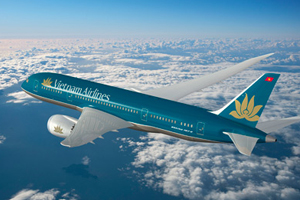 6.Airlines 6.Airlines
Besides
these airline companies: Vietnam Airlines, Indochina Airlines, Jetstar
Pacific (Pacific Airlines formerly) which have been in operation for
years, there are other new airline companies are planning to operate.
Each has domestic flights to all the major cities. While Vietnam
Airlines has plenty of flights to more than 25 inside-country
destinations and a lot of flights to many other countries in Europe,
America, Asia and Australia.
Bringing international travellers to and
from Vietnam, also there are plentiful regular flights of these
airlines:Air France, Lufthansa Airlines, KLM Airlines,Bristish Airlines,
Lauda Air, United Airlines, Delta Airlines, Japan Airlines, Cathay
Pacific Airlines, Thai Airways, China Airlines, Eva Airlines, Singapore
Airlines, Quatas Airlines, Korean Airlines, Asiana Airlines, Swiss Air,
Aeroflot, Emerates, Philippines Airlines, Malaysia Airlines, Southern
Airlines, Garuda Airlines, Bangkok Airways, Siem Reap Air, Laos
Airlines…
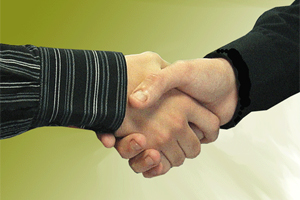 7. Communication 7. Communication
Internet
is very popular in Vietnam. In addition to all major hotels, you can
access Internet almost anywhere at anytime in Internet cafes. Prices are
cheapest in Asia, running around 30 cents hour. You can also use your
laptops in every hotel in Vietnam. Local phone calls cost about a cent
per minute inside cities, and less than 6 cents per minute within the
country. It costs about 15 cents per minute for international calls.
Besides, internet phone prepaid cards are available at around $US 3 per
card for virtually 200 minutes of calls.
8. language
Like
its nation, the Vietnamese language has travelled rough roads. When
Vietnam was under the harsh rule of feudal Chinese invaders (for almost a
thousand years), we were forced to use Chinese language. Thanks to our
ancestors' continuous struggles our country was not lost but the Chinese
influences were obviously profound. Therefore, even several centuries
after we seized independence in 980, we still couldn't give up using
Chinese language. Meanwhile, China has been always the main threat for
the country's liberty. Chinese invaders came back from time to time. And
until today they seem never to abandon their ambition to take over
Vietnam. Several centuries ago, our ancestors created CHU NOM, a kind of
Vietnamese writing based on Chinese pictography. In the 17th century a
French missionary named Alexandre de Rhodes developed QUOC NGU, our
present language, based on Latin alphabets. Unlike other languages in
region (many of which use sanskrit as the base) Vietnamese language is
very readable to the Westerners. It is much easier to find street
addresses, names of hotels, restaurants, companies etc. in Vietnam than
in Thailand, Malaysia, Indonesia, India or China. But because of the
system of accent marks, the pronounciation seems a little harder.
Most
popular foreign language spoken in Vietnam is English. The next in
orders may be French, German, Japanese, Thai, Spanish, Italian…
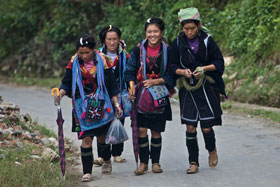 9. Ethnic groups 9. Ethnic groups
Vietnam
has 54 peoples, in which more than 80% are Kinh people speaking
Vietnamese. 53 other ethnic groups, such as : Khmer, H'Mong, Thai,
Chinese, Dao, Tay, Nung, Giarai, Ede, Bana, Strieng, Champa... vary from
1.5 million down to a few thousand of people. Even though they have
their own languages and cultures, most of them speak Vietnamese too. The
peoples of H'Mong, Tay, Dao, Thai black and white ... in the north or
northwest mountainous areas of Vietnam are appreciated by international
tourists the most colorful in their own customs and dressing in South
East Asia.
10. Office hoursGovernment offices and banks run from
8:00 a.m. through 5:00 p.m., with one hour closing for lunch.
Restaurants, bars and night clubs are open until midnight and often as
late as 2:00 to 3:00 a.m. You will find gift, novelty shops and markets
opening daily, even through the lunch hours
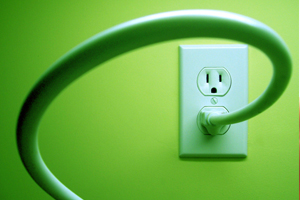 11. Electricity 11. Electricity
Vietnam
has 220 volts and 50 cycles electricity. Almost all electric outlets
have two round prongs. However, most of the larger hotels also have
three prong outlets. You are advised to bring adapters with you, but
they can also be purchased locally
12. Luggage and apparel
Normally,
international tourists prefer bringing big suitcases since most like to
purchase gifts to take home for themselves, friends or relatives. It is
also easy to purchase additional luggage in Vietnam. As earlier stated,
weather and climate in Vietnam is moderate - and never cold. Thus,
you're advised against bringing heavy clothes. Dress lightly and
comfortably. Cameras and/or video equipment are always good ideas. Dress
is generally informal. The Vietnamese are generally modest. However,
shorts or strapless shirts are generally not welcomed in pagodas,
churches or other holy places. Many tourists wear sandals. Known as well
that virtually all products, such as shoes, clothes, bags, and souvenir
items are quite inexpensive in Vietnam. In many locations, you can even
order tailor-made clothes within a single day or even a few hours.
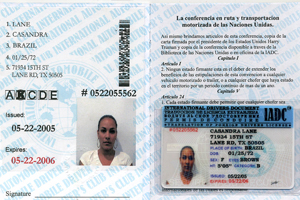 13. International driving licenses 13. International driving licenses
International
drivers' licenses are required for those who come to Vietnam to do
business and plan to drive vehicles or motorcycles. Licenses are
required for more than 110cc motorcycles. Be sure to bring with you
proof of your foreign driver's license
14. Tips
Tipping
is always appreciated for drivers, porters, waiters, waitresses and
tour guides. It is considered polite to give tips for services well
done. In general, tour guides receive the most generous tips, followed
by drivers, porters, waiters and waitresses. Tipping, however, is not
obligatory
15. Vietnamese culinary delights
Located
at the trading cross roads of Asia, Vietnam has been in a very good
position for international transportation. This can help explain why
Vietnam has at various times been under the domination of the Chinese
and French, and was caught in the Vietnamese-American war. Vietnam has
been influenced by many external cultures and cuisines, including the
Spanish, Portugal, French, Indian, Thai, Cambodian and Laotian. It can
be said that Vietnamese food has been widely influenced by foreigner
tastes. Vietnamese cuisine is characterized by rich seasonings,
including salt, chili, onion, garlic, citronella, pepper and fish sauce.
At the same time, the cuisine is not as spicy as the cuisine in Korea,
India, or Thailand. A common Vietnamese meal might consist of steamed
rice, fish, along with small cuts of meat, vegetables and eggs, blended
together. Common meats and fowl include pork, beef, goat and chicken.
Fish and other sea foods are in abundance. Vietnam is a major seafood
exporter. Fruits are also plentiful and are both colorful and tasty.
Many Vietnamese, including devoted Buddhists, maintain a vegetarian
diet.
Vietnam is internationally well known for its spring rolls and
beef noodle soup, called "pho," and pronounced "faw." These originated
in the north. "Bun bo," another variety of noodle soup, and a bit
spicier than "pho," comes from Hue in central Vietnam. Yet another form
of noodle soup, made with other spices and pork or shrimp, "hu tieu,"
originates in the south. Desserts are often served with dragon fruit,
pineapple, watermelon, jackfruit, mango, grapes, bananas, longan and
plums.m, an ethnic museum, and many other places of interest. Hanoi
deserves the reputation as being one of the most beautiful cities of
Asia.
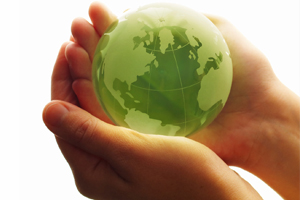 16. Religions 16. Religions
The
Vietnamese follow a number of religious traditions. The populace is
roughly 40 percent Buddhist, 10 percent Catholic, 7 percent Cao Daists,
and 10 percent for all others, including Protestants, Hoa Haoists,
Muslim, Hindu and Brahmin. Regardless of religious affiliation,
Vietnamese are also ancestor worshipers and always reserve a central and
solemn location in their homes for altars dedicated to their ancestors.
These altars are not only for religious or worship activities, but also
for preserving and keeping spiritual, mental, and traditional values of
the Vietnamese family intact. One of the most appreciated values in
Vietnamese spiritual life is gentleness and meekness. The family is
important, central to all Vietnamese values, which are life-giving.
Vietnamese avoid causing harm and suffering to others. They take pride
in keeping the family at the center of their worship life
|
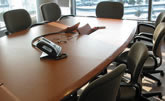
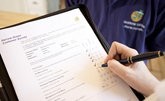











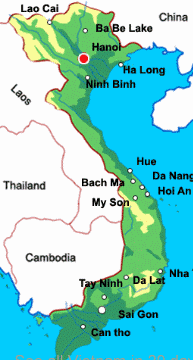
 Norway,
Finland, Sweden, Denmark, Japan, Korea, Singapore, Thailand, Malaysia,
Laos, Philippines, Indonesia, Brunei… While the Vietnamese government is
considering the cancellation of visa requirements for other countries,
clients not included in the list above need to secure visas. They will
need to supply the following information:
Norway,
Finland, Sweden, Denmark, Japan, Korea, Singapore, Thailand, Malaysia,
Laos, Philippines, Indonesia, Brunei… While the Vietnamese government is
considering the cancellation of visa requirements for other countries,
clients not included in the list above need to secure visas. They will
need to supply the following information: 2.Customs and security
2.Customs and security 6.Airlines
6.Airlines 7. Communication
7. Communication 9. Ethnic groups
9. Ethnic groups  11. Electricity
11. Electricity 13. International driving licenses
13. International driving licenses 16. Religions
16. Religions Travel tips
Travel tips